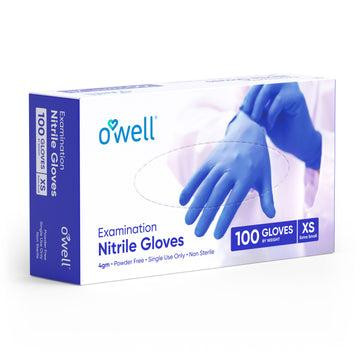In various industries and healthcare settings, the use of gloves is essential to maintain hygiene, safety, and protection. While latex gloves have been widely used in the past, concerns regarding latex allergies have led to the growing popularity of latex-free alternatives, particularly nitrile gloves. In this article, we will explore the advantages and versatility of latex-free nitrile gloves and their importance in various applications.
Understanding Latex Allergies:
Latex allergies can cause mild to severe allergic reactions in some individuals. These allergies are often triggered by proteins found in natural latex rubber. Symptoms can range from skin rashes and itching to more severe reactions like difficulty breathing and anaphylaxis. Given these risks, it is crucial to provide latex-free alternatives to protect individuals with latex allergies.
The Advantages of Latex-Free Nitrile Gloves:
Latex-free nitrile gloves offer numerous advantages, making them a preferred choice in various industries:
Hypoallergenic Properties:
Nitrile gloves are made from a synthetic material that does not contain the proteins responsible for latex allergies. This makes them an excellent choice for individuals with latex sensitivities or allergies.
Exceptional Strength and Durability:
Nitrile gloves are known for their robustness and resistance to punctures, tears, and chemicals. They provide reliable protection against a wide range of substances, making them suitable for use in various applications.
High Sensitivity and Dexterity:
Nitrile gloves offer excellent tactile sensitivity and flexibility, allowing users to perform delicate tasks with ease. This is especially important in healthcare, laboratories, and food service industries.
Latex-Like Fit and Comfort:
Nitrile gloves have a snug fit that mimics the feel of latex gloves. They are comfortable to wear for extended periods, reducing hand fatigue during tasks that require glove use.
Versatility:
Nitrile gloves are versatile and suitable for a wide range of applications, including healthcare, laboratory work, food handling, automotive, and manufacturing industries.
Resistance to Chemicals:
Nitrile gloves are highly resistant to a variety of chemicals, including oils, acids, and solvents. This makes them ideal for tasks involving exposure to hazardous substances.
Allergy Prevention:
Using latex-free nitrile gloves not only protects individuals with latex allergies but also prevents the potential development of new latex sensitivities.
Applications of Latex-Free Nitrile Gloves:
Healthcare and Medical Settings:
Latex-free nitrile gloves are a staple in healthcare environments. They provide protection for healthcare workers and patients during medical procedures, examinations, and surgeries. Their hypoallergenic nature ensures the safety of latex-sensitive individuals.
Laboratories and Research:
Laboratories require gloves that offer precise tactile sensitivity and protection against chemicals. Nitrile gloves are the go-to choice for researchers and scientists working with hazardous materials and delicate instruments.
Food Service and Preparation:
In the food industry, maintaining hygiene is paramount. Nitrile gloves are commonly used by food handlers to prevent contamination and ensure food safety.
Automotive and Mechanical Work:
Mechanics and technicians often use nitrile gloves when handling automotive fluids, oils, and chemicals. The gloves protect against skin exposure to these potentially harmful substances.
Manufacturing and Industrial:
Nitrile gloves are essential in manufacturing and industrial settings where workers are exposed to various materials and chemicals. They offer durable protection without compromising dexterity.
First Responders and Emergency Services:
First responders, paramedics, and firefighters rely on nitrile gloves when attending to medical emergencies and hazardous situations. The gloves provide barrier protection against bodily fluids and hazardous materials.
Choosing the Right Nitrile Gloves:
When selecting nitrile gloves, consider the following factors:
Glove Thickness: Nitrile gloves come in various thicknesses, with thicker gloves providing enhanced durability and protection for more robust tasks.
Powdered vs. Powder-Free: Choose between powdered and powder-free nitrile gloves. Powdered gloves may be easier to put on, while powder-free gloves reduce the risk of contamination.
Size: Ensure you select the right glove size for a snug and comfortable fit. Ill-fitting gloves can compromise dexterity and protection.
Quality Standards: Look for nitrile gloves that meet industry standards for quality and safety, such as ASTM D6319 for medical gloves or ASTM D6978 for chemotherapy gloves.
For More Info:-







Comments